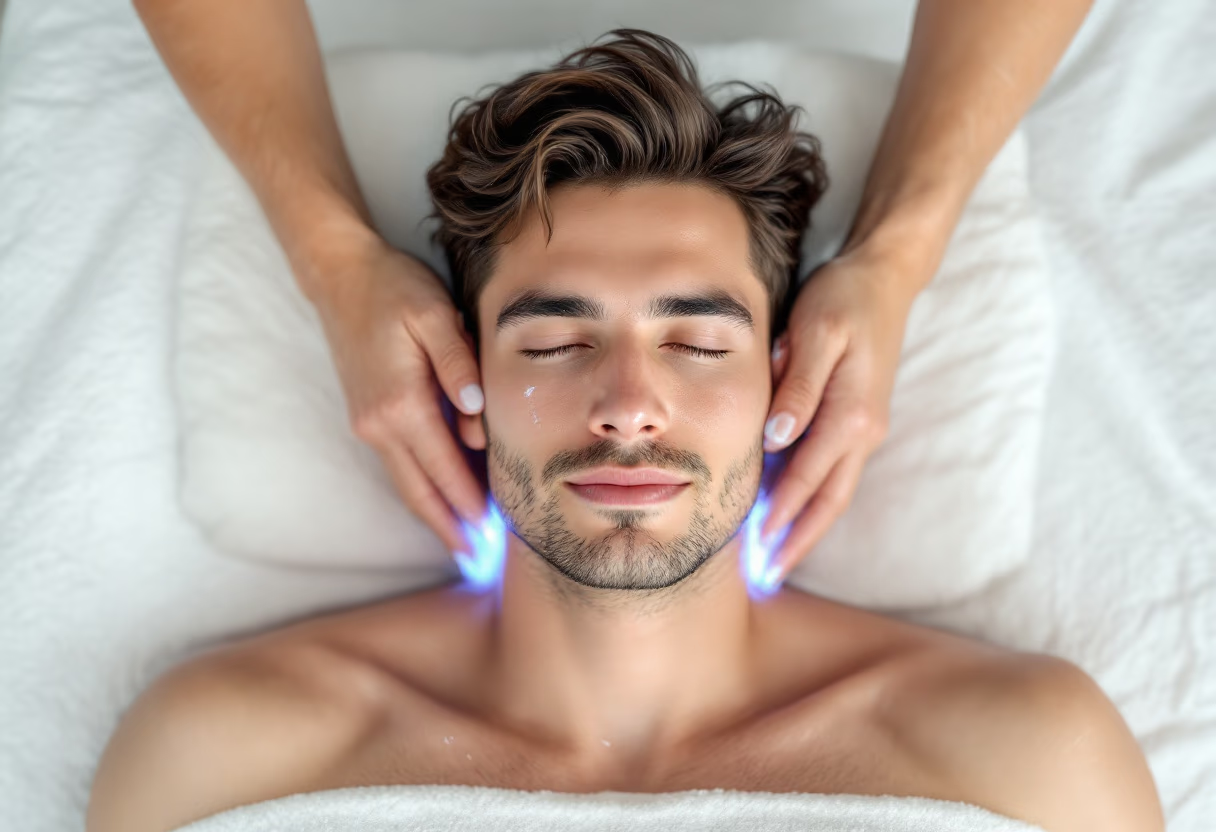
20 Years of Producing the Highest Quality, Most Reliable, and Effective LED mask.
Discover the benefits and risks of red light therapy (RLT), a non-invasive treatment using low-wavelength red light to promote healing, reduce inflammation, and enhance skin health." If you need further assistance or additional information, feel free to ask!

Many people are still unfamiliar with this emerging skin treatment that is quietly gaining traction worldwide. Red light therapy (RLT) is among the most promising non-invasive options, using specific wavelengths of red light to stimulate cellular repair. It is being explored to calm skin or muscle irritation, ease depression symptoms, and slow visible aging.
As with any intervention, learn what red light therapy involves and discuss it with a qualified clinician before starting.
RLT is a non-thermal treatment intended to support the body’s natural healing processes. It was first studied by scientists seeking to grow plants in space; wavelengths around 660–850 nm encouraged growth by penetrating tissues and boosting mitochondrial activity.
The same mechanism—enhanced mitochondrial function—has since been applied to human skin, with early work suggesting faster repair and reduced inflammation. Related terms such as low-level laser or soft-laser therapy share this origin.
RLT is no longer limited to cosmetic skin care. Clinicians also use it for sleep disturbance, mood disorders, joint discomfort, and muscle inflammation. Published reports describe support for wound healing, scars, wrinkles, cold sores, carpal tunnel syndrome, and some cancer-treatment side-effects.
Key Applications Include:
RLT is not a cure-all, yet controlled studies note measurable gains. Anecdotes abound online, and ongoing trials may clarify which uses are consistently effective.
Reported benefits include:
Further reading:
This information is educational and not a substitute for professional medical advice.
Additional science-backed benefits:
Low-intensity light keeps risks minimal, yet prolonged exposure can burn the skin; test on a small area first. Eye damage is another possible risk, although some studies report ocular benefits.
Safety best practices:
Used correctly, red light therapy has a favourable safety profile and can be used regularly with minimal risk.
Led Mask supplies MDSAP-certified light-therapy devices intended for at-home or clinical use. Private-label and personal-use options are available; contact the team for guidance.
Ongoing research continues to uncover new applications and refine protocols, positioning red light therapy for wider adoption. Advances in technology, accumulating evidence, and greater accessibility suggest an expanding role in preventive care and treatment plans.
Whether the goal is aesthetic improvement, pain relief, or general wellness, choose quality devices, follow evidence-based protocols, and keep your healthcare provider informed.
For more information, read the detailed post here or contact Led Mask’s expert team.
Further reading:
